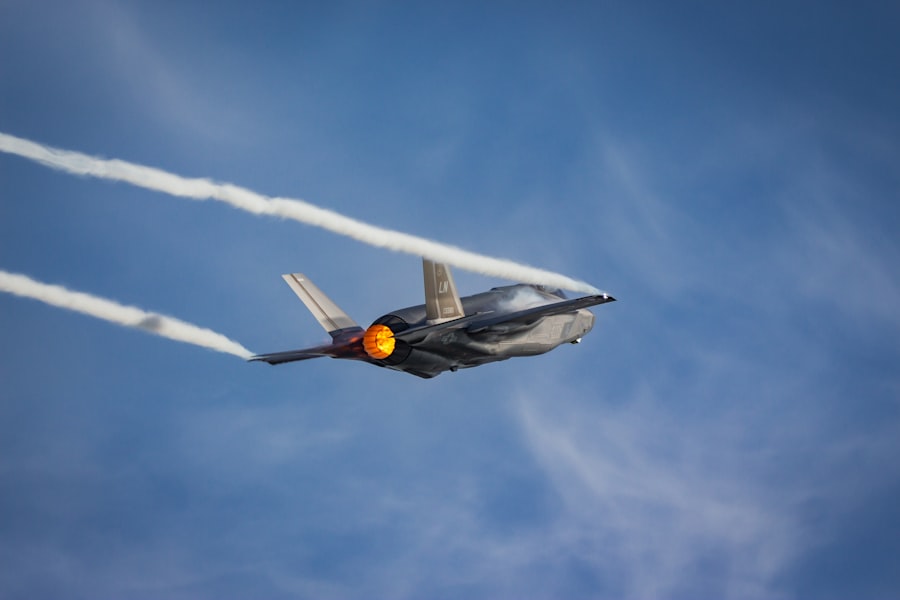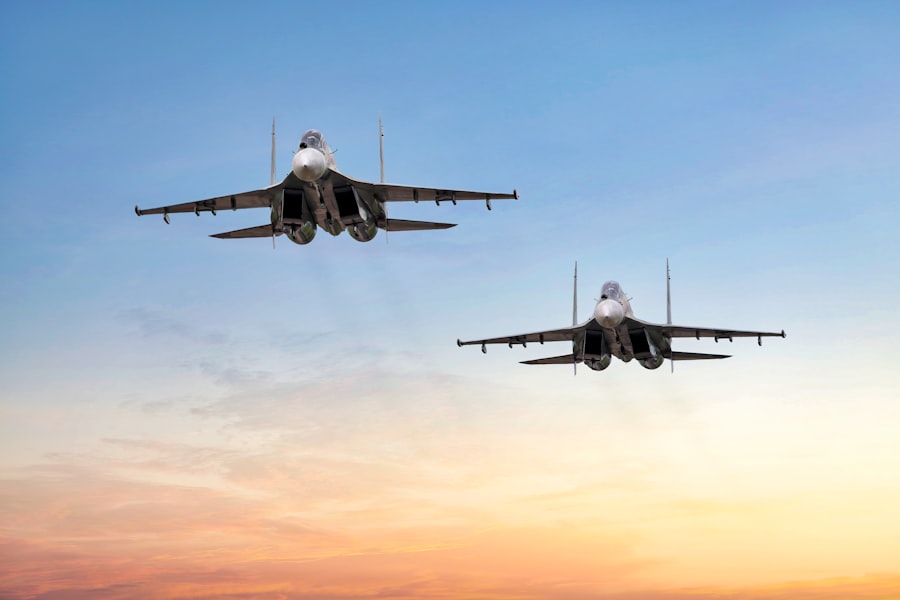The aerospace and defense industry is a multifaceted sector that encompasses the design, development, and production of aircraft, spacecraft, and defense systems. This industry plays a crucial role in national security, economic stability, and technological advancement. It includes a wide range of activities, from manufacturing commercial airliners and military jets to developing satellite systems and missile defense technologies.
The industry is characterized by its high barriers to entry, significant capital investment requirements, and a complex regulatory environment. Major players in this field include Boeing, Lockheed Martin, Airbus, Northrop Grumman, and Raytheon Technologies, among others. The aerospace and defense sector is not only vital for military applications but also significantly impacts civilian life through commercial aviation and space exploration.
The interdependence of these two domains has led to innovations that benefit both military and civilian applications. For instance, technologies developed for military aircraft often find their way into commercial aviation, enhancing safety and efficiency. Similarly, advancements in satellite technology have revolutionized communication, navigation, and weather forecasting, demonstrating the industry’s broad influence on modern society.
Key Takeaways
- The Aerospace & Defense Industry is a critical sector that encompasses the development, production, and maintenance of military and civilian aircraft, as well as defense systems and equipment.
- The COVID-19 pandemic has significantly impacted the Aerospace & Defense Industry, leading to disruptions in supply chains, reduced demand for air travel, and delays in defense projects.
- Technological advancements and innovations, such as unmanned aerial vehicles (UAVs) and advanced radar systems, are driving the evolution of the Aerospace & Defense Industry.
- Sustainability and environmental considerations are becoming increasingly important in the Aerospace & Defense Industry, with a focus on reducing carbon emissions and developing eco-friendly technologies.
- Global geopolitical shifts, including rising tensions between major powers and regional conflicts, are influencing defense spending and shaping the future of the Aerospace & Defense Industry.
Impact of COVID-19 on the Aerospace & Defense Industry
The COVID-19 pandemic has had a profound impact on the aerospace and defense industry, leading to unprecedented challenges and disruptions. The commercial aviation sector was particularly hard hit, with global air travel plummeting due to travel restrictions and health concerns. Airlines faced severe financial strain, resulting in mass layoffs, fleet reductions, and the grounding of aircraft.
According to the International Air Transport Association (IATA), global passenger traffic fell by 66% in 2020 compared to the previous year, leading to a loss of billions in revenue for airlines worldwide. In contrast to the commercial segment, the defense sector exhibited relative resilience during the pandemic. Governments continued to prioritize defense spending amid rising geopolitical tensions and security concerns.
However, even within this segment, supply chain disruptions affected production schedules and delivery timelines. Manufacturers faced challenges in sourcing materials and components due to lockdowns and restrictions on movement. This situation highlighted the industry’s reliance on global supply chains and underscored the need for greater flexibility and adaptability in operations.
Technological Advancements and Innovations in Aerospace & Defense

Technological advancements are at the heart of the aerospace and defense industry, driving innovation and enhancing capabilities across various domains. One of the most significant trends is the increasing integration of artificial intelligence (AI) and machine learning into defense systems. These technologies enable more sophisticated data analysis, predictive maintenance, and autonomous operations.
For example, AI algorithms can analyze vast amounts of data from sensors on military aircraft to optimize performance and enhance decision-making processes. Another area of innovation is the development of advanced materials and manufacturing techniques. The use of composite materials has become prevalent in aircraft design due to their lightweight properties and strength.
Additive manufacturing, or 3D printing, is also revolutionizing production processes by allowing for rapid prototyping and reduced waste. Companies like Boeing and Airbus are investing heavily in these technologies to streamline production and improve efficiency while maintaining high safety standards.
Sustainability and Environmental Considerations in Aerospace & Defense
| Metrics | 2018 | 2019 | 2020 |
|---|---|---|---|
| Carbon Emissions (tons) | 1,200,000 | 1,150,000 | 1,100,000 |
| Renewable Energy Usage (%) | 15% | 18% | 20% |
| Waste Recycled (tons) | 500,000 | 550,000 | 600,000 |
| Water Usage (gallons) | 2,000,000 | 1,800,000 | 1,600,000 |
Sustainability has emerged as a critical focus for the aerospace and defense industry as stakeholders increasingly recognize the need to address environmental concerns. The aviation sector is a significant contributor to greenhouse gas emissions, prompting calls for more sustainable practices. In response, manufacturers are exploring alternative fuels, such as sustainable aviation fuel (SAF), which can significantly reduce carbon emissions compared to traditional jet fuel.
Airlines are also investing in more fuel-efficient aircraft designs that minimize environmental impact. In addition to fuel efficiency, the industry is examining its entire lifecycle approach to sustainability. This includes not only the production phase but also end-of-life considerations for aircraft and defense systems.
Companies are exploring ways to recycle materials from decommissioned aircraft and repurpose components for new applications. Furthermore, regulatory bodies are increasingly imposing stricter environmental standards, pushing companies to innovate in their approaches to sustainability.
Global Geopolitical Shifts and Their Influence on the Aerospace & Defense Industry
The aerospace and defense industry is deeply intertwined with global geopolitical dynamics. As nations navigate shifting power balances, defense spending often reflects these changes. For instance, tensions in regions such as Eastern Europe and the South China Sea have prompted countries to bolster their military capabilities.
This has led to increased demand for advanced weaponry, surveillance systems, and cybersecurity solutions. Countries like China and Russia are investing heavily in their defense sectors, challenging traditional power structures and prompting responses from NATO allies. Moreover, international collaborations have become increasingly important in addressing global security challenges.
Joint ventures between countries can lead to shared technological advancements and cost efficiencies in defense procurement. Programs like the F-35 Joint Strike Fighter exemplify how multinational partnerships can enhance capabilities while distributing costs among participating nations. However, these collaborations also raise questions about technology transfer and intellectual property rights, necessitating careful negotiation and management.
Supply Chain Challenges and Resilience in the Aerospace & Defense Industry

The aerospace and defense industry relies on complex global supply chains that can be vulnerable to disruptions. The COVID-19 pandemic exposed these vulnerabilities as manufacturers faced delays in sourcing components due to factory shutdowns and transportation restrictions. The semiconductor shortage that emerged during this period further exacerbated challenges for companies reliant on advanced electronics for their products.
In response to these challenges, many companies are reevaluating their supply chain strategies to enhance resilience. This includes diversifying suppliers, increasing inventory levels of critical components, and investing in domestic manufacturing capabilities. For instance, some defense contractors are exploring local sourcing options to mitigate risks associated with international supply chains.
Additionally, companies are leveraging digital technologies such as blockchain to improve transparency and traceability within their supply chains.
Opportunities for Growth and Investment in the Aerospace & Defense Industry
Despite the challenges faced by the aerospace and defense industry, numerous opportunities for growth and investment exist. The increasing focus on cybersecurity presents a significant avenue for expansion as governments seek to protect critical infrastructure from cyber threats. Companies specializing in cybersecurity solutions for defense systems are likely to see heightened demand as nations prioritize safeguarding their digital assets.
Furthermore, advancements in space exploration are creating new markets within the aerospace sector. The rise of private space companies like SpaceX and Blue Origin has opened up opportunities for commercial satellite launches, space tourism, and lunar exploration initiatives. Governments are also investing in space capabilities as they recognize its strategic importance for national security and economic growth.
Conclusion and Future Outlook for the Aerospace & Defense Industry
Looking ahead, the aerospace and defense industry is poised for transformation driven by technological advancements, changing geopolitical landscapes, and evolving market demands. As nations continue to prioritize defense spending amid rising security concerns, opportunities for innovation will abound. The integration of AI, advanced materials, and sustainable practices will shape the future of aerospace manufacturing while addressing environmental challenges.
Moreover, as global supply chains adapt to new realities post-pandemic, resilience will become a key focus area for companies operating within this sector. The industry’s ability to navigate these complexities will determine its long-term viability and growth potential. Ultimately, the aerospace and defense industry stands at a crossroads where strategic investments in technology and sustainability will define its trajectory in an increasingly interconnected world.


